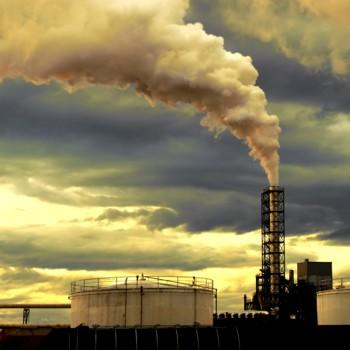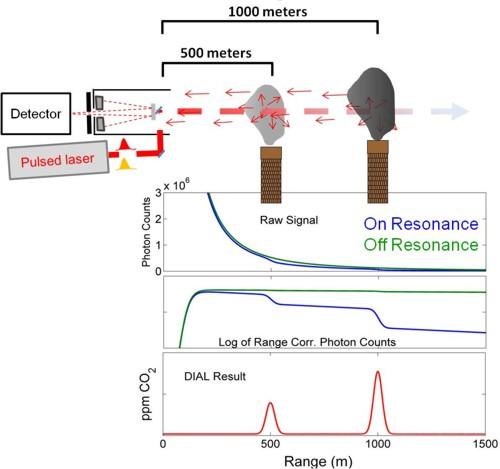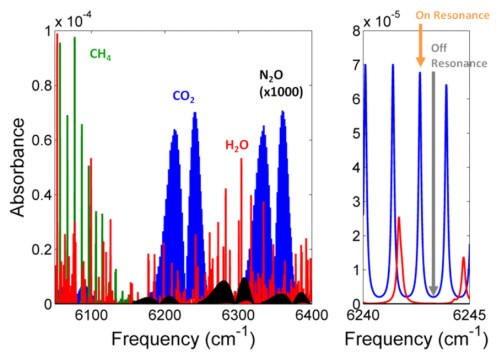Differential absorption LIDAR for the detection and quantification of greenhouse gases
Summary
We are developing a method for accurately quantifying greenhouse gas emissions from natural and anthropogenic sources and sinks to meet the requirements for local, national, and international mitigation efforts. It will be based on a technology known as differential absorption LIDAR (Light Detection And Ranging), which can provide species specific concentrations of greenhouse gases with range resolution. When these measurements are coupled to precise wind velocity measurements, the flux of the greenhouse gases, the important quantity for regulators, can be determined. An indoor testing facility is also being developed to rigorously test hardware components (optical receiver, laser control, etc.) and software (analysis algorithms, data throughput).
Description

The basic processes involved in elastic backscatter LIDAR are as follows. A laser source emits a pulse of light (typically a few nanoseconds), and as the pulse propagates, the photons interact with particles in the atmosphere. Some of these interactions, such as Mie and Rayleigh scattering, result in backscattered photons. The photons are collected by the detector and recorded as function of time. This time-of-flight data has a direct correspondence with the range (distance) at which the scattering event occurred.
Differential absorption LIDAR (DIAL) is based on the same principal, but operates at two wavelengths, one on resonance and one off resonance of the molecular absorption of the greenhouse gas of interest. Because the on resonance wavelength is more strongly absorbed by the greenhouse gas, the difference between both signals is proportional to its number density. Thus, this technology could provide regulators with quantity of greenhouse gases being released at a particular location and pinpoint their sources.


Laser system:
The DIAL system is being designed to span the near infrared spectral region where the greenhouse gases, carbon dioxide, methane, and nitrous oxide, absorb. The tunable near IR light will be generated using a specially designed optical parametric oscillator (OPO) and pumped with a 100 Hz Nd:YAG laser. The OPO is based on the Rotated Image Singly-Resonant Twisted RectAngle (RISTRA) design which has demonstrated very high conversion efficiency, high per pulse laser energy, and excellent beam quality. The proposed DIAL system will implement heterodyne detection and takes advantage of acoustic-optical-modulator (AOM) and electro-optic-modulator (EOM) technology to recover multiple points across the absorption lineshape for each backscatter return signal using a single seed laser and a high speed detector (400 MHz InGaAs APD).

